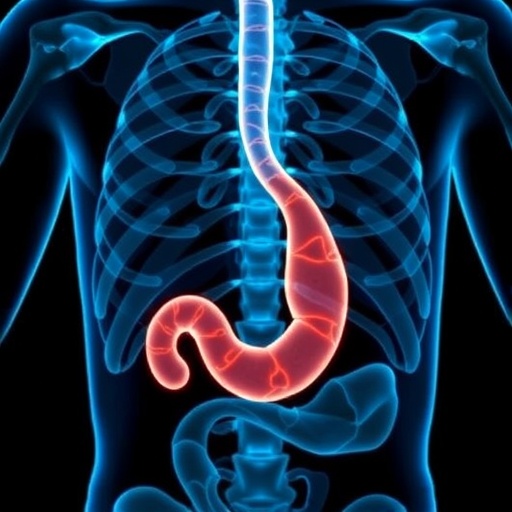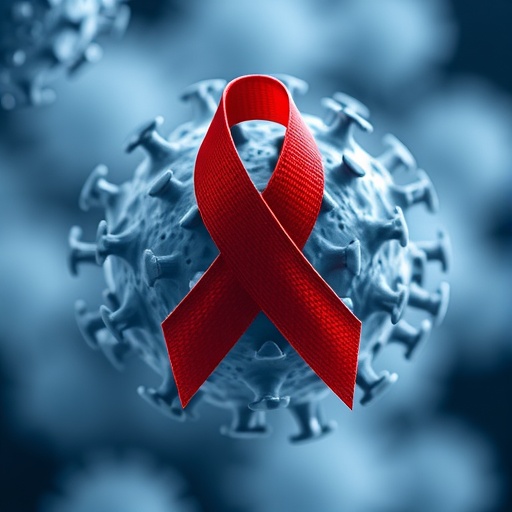
In a groundbreaking multi-center study published in BMC Cancer, researchers have unveiled a novel surveillance protocol for gastric cancer that leverages carcinoembryonic antigen (CEA) levels to significantly enhance recurrence detection and patient monitoring strategies. Gastric cancer remains one of the leading causes of cancer-related mortality worldwide, with recurrence posing a substantial challenge to long-term survival and therapeutic success. This new protocol presents an important evolution in how clinicians may tailor post-treatment surveillance, promising improved outcomes through more precise and individualized patient management.
The research, conducted by an extensive team led by Zhang et al., analyzed data from a remarkable 1,708 patients diagnosed with stage I-III gastric adenocarcinoma at the Sun Yat-Sen University Cancer Center. The study focused on evaluating the predictive performance of CEA, a well-known tumor marker, in identifying cancer recurrence. Previous approaches to using tumor markers in gastric cancer follow-up have generally lacked specificity and sensitivity, limiting their utility. However, this study’s robust data set and sophisticated analytic methods have allowed the team to stratify patients based on their baseline CEA levels and propose differentiated surveillance strategies.
One of the most striking findings relates to the disease-free survival (DFS) rates when patients are grouped by their initial CEA baseline status. Patients who began with normal CEA baselines had a notably higher 5-year DFS rate of 61.1%, compared to just 42.1% for those with elevated baseline CEA levels. This significant disparity underscores the prognostic value of CEA at baseline, suggesting that initial CEA measurements can inform clinicians about long-term patient risk and treatment responsiveness.
Moreover, the study identified a subgroup of patients termed the “normalization group,” where initially elevated CEA levels returned to normal post-treatment. These patients displayed DFS rates comparable to those with persistently normal CEA levels, indicating that dynamic changes in CEA, rather than static measurements, could provide critical information regarding a patient’s prognosis. This nuanced understanding of CEA kinetics creates the foundation for a more personalized monitoring regimen tailored to patient biology.
Intriguingly, the sensitivity and specificity of CEA as a recurrence predictor appeared to depend heavily on baseline levels. The elevated baseline group achieved markedly higher sensitivity (0.73) for recurrence detection, meaning that CEA testing in this cohort was more likely to correctly identify patients experiencing cancer recurrence. Conversely, the normal baseline group exhibited superior specificity (0.87), translating to a lower false-positive rate. These complementary findings imply that surveillance strategies should be customized based on initial CEA status: those with elevated baselines require more sensitive detection methods, while patients with normal baselines benefit from approaches that reduce unnecessary interventions and anxiety.
The methodological thoroughness of the research team is evident in their approach to validation. Beyond internal validation within the original patient cohort, the investigators conducted longitudinal validation using an expanded dataset containing over 6,400 follow-up records. The consistency of results across this amplified data volume provides confidence in the robustness of the surveillance protocol. Additionally, external validation involving 109 patients from another institution—the Sixth Affiliated Hospital of Sun Yat-Sen University—corroborated the findings, underscoring the protocol’s generalizability across different clinical environments and patient populations.
This multi-tiered validation process addresses common pitfalls in biomarker-based studies, where overfitting or center-specific biases can undermine broader applicability. Here, by confirming the protocol’s accuracy in diverse cohorts, the research advocates for immediate integration of CEA-based surveillance adjustments in clinical practice. Such incorporation is especially important given the inclusion of these findings in recommendations potentially influencing the National Comprehensive Cancer Network (NCCN) gastric cancer guidelines.
The implications of this study extend beyond technical advancements; they directly affect patient quality of life and healthcare resource allocation. Tailored surveillance according to baseline CEA status can minimize unnecessary diagnostic procedures in low-risk patients, sparing them physical discomfort and psychological distress. Meanwhile, high-risk patients can receive more intensive monitoring, facilitating earlier detection of recurrence when intervention is more likely to succeed.
Furthermore, this research signals a paradigm shift toward biomarker-driven oncology care, where treatment and follow-up are increasingly individualized. The dynamic monitoring of CEA levels exemplifies how blood-based biomarkers can serve as minimally invasive tools to inform complex clinical decisions, bridging the gap between molecular insights and practical application.
It must be noted that while CEA is a widely available and cost-effective marker, its value in gastric cancer had previously been questioned due to inconsistent detection abilities across different patient populations. This study provides compelling evidence to resurrect CEA’s role, but with essential modifications: it emphasizes stratification based on baseline levels and highlights the importance of longitudinal change patterns rather than single time-point measurements.
Importantly, these findings advocate for a shift from “one-size-fits-all” surveillance protocols, which have traditionally guided gastric cancer follow-up, to precision oncology approaches tailored to individual risk profiles. This aligns with contemporary trends in cancer management that prioritize bespoke strategies over blanket recommendations, ultimately improving outcomes while optimizing healthcare efficiency.
The authors also touch upon the potential cost-benefit ramifications of adopting this novel surveillance protocol. By reducing false positive rates among patients with normal baseline CEA while augmenting sensitivity in higher-risk groups, healthcare systems may see reductions in unnecessary imaging and invasive investigations. This could alleviate financial burdens on patients and institutions alike, particularly in regions with high gastric cancer incidence and constrained medical resources.
While the study offers transformative insights, it equally acknowledges limitations that necessitate future research. The authors suggest prospective clinical trials to confirm the protocol’s real-world efficacy and to explore its integration with other emerging biomarkers and imaging modalities. They also highlight the importance of investigating molecular mechanisms underpinning the variations in CEA kinetics, which may unlock further refinements in surveillance accuracy.
Overall, this comprehensive high-volume, multi-center study by Zhang and colleagues marks a pivotal step forward in gastric cancer management. By elucidating the nuanced role of CEA in recurrence prediction and crafting a stratified surveillance protocol validated through extensive data, the research sets a new standard for oncologic follow-up. The promise of improved early detection of recurrence dovetails with larger efforts to enhance patient survivorship and quality of life in one of the most challenging cancer types.
The adoption of this approach could reshape clinical workflows for gastric cancer surveillance across the globe and inspire similar biomarker-centric strategies in other malignancies. As oncology continues its rapid transformation with personalized medicine at the forefront, studies such as this underscore the critical importance of integrating biological insights into everyday clinical decision-making.
In summary, the novel CEA-based surveillance protocol stands out as an innovative, evidence-backed advancement in gastric cancer care. Combining rigorous study design, large patient cohorts, and external validation, it provides a robust framework that may soon become a cornerstone of gastric cancer monitoring protocols. Patients and clinicians alike stand to benefit from more individualized and effective recurrence detection, ushering in a new era of precision oncology.
Subject of Research: Gastric cancer surveillance protocols and the predictive performance of carcinoembryonic antigen (CEA) in recurrence monitoring.
Article Title: Novel surveillance protocol for gastric cancer based on CEA: a high-volume multi-center study.
Article References: Zhang, R., Chen, X., Chen, G. et al. Novel surveillance protocol for gastric cancer based on CEA: a high-volume multi-center study. BMC Cancer 25, 1396 (2025). https://doi.org/10.1186/s12885-025-14790-w
Image Credits: Scienmag.com
DOI: https://doi.org/10.1186/s12885-025-14790-w
Tags: cancer recurrence challengescarcinoembryonic antigen CEA levelsclinical implications of CEAdisease-free survival ratesenhancing therapeutic success in gastric cancergastric adenocarcinoma recurrence detectiongastric cancer surveillance protocolindividualized patient management strategiesinnovative cancer detection methodsmulti-center study BMC Cancerpersonalized post-treatment monitoringpredictive performance of tumor markers




